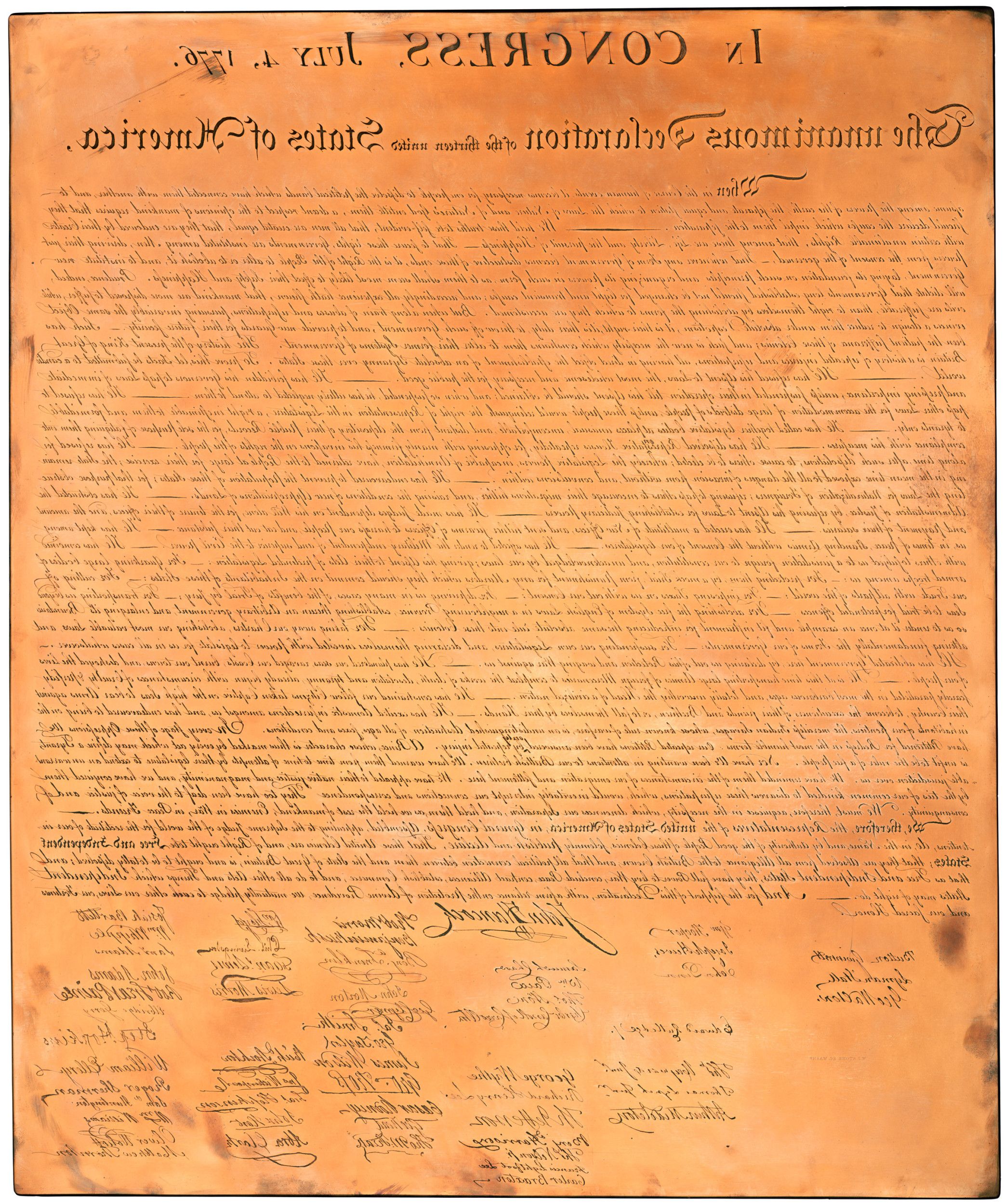Engraving of the Declaration of Independence
1823
Add to Favorites:
Add all page(s) of this document to activity:

As early as 1817, the Declaration of Independence had begun to fade. In 1820 Secretary of State John Quincy Adams asked William J. Stone, a Washington, DC, printer and engraver, to make a copper engraving reproducing the size, text, lettering, and signatures of the original. Stone finished his printing plate in 1823 and printed 200 copies from it on parchment for Federal, state, and local officials, as well as for the descendants of the original signers. He was later allowed to print and sell an unknown number of copies. In 1976, printers from the Bureau of Engraving and Printing struck seven additional prints from Stone’s copperplate to commemorate the Bicentennial of the American Revolution.
This primary source comes from the General Records of the Department of State.
National Archives Identifier: 1656605
Full Citation: Engraving of the Declaration of Independence; 1823; Plates and Facsimiles of the Declaration of Independence, 1823 - 1951; General Records of the Department of State, Record Group 59; National Archives at College Park, College Park, MD. [Online Version, https://www.docsteach.org/documents/document/engraving-declaration-of-independence, May 8, 2024]Activities that use this document
- Celebrating America's Bicentennial in 1976
Created by the National Archives Education Team
Rights: Public Domain, Free of Known Copyright Restrictions. Learn more on our privacy and legal page.



